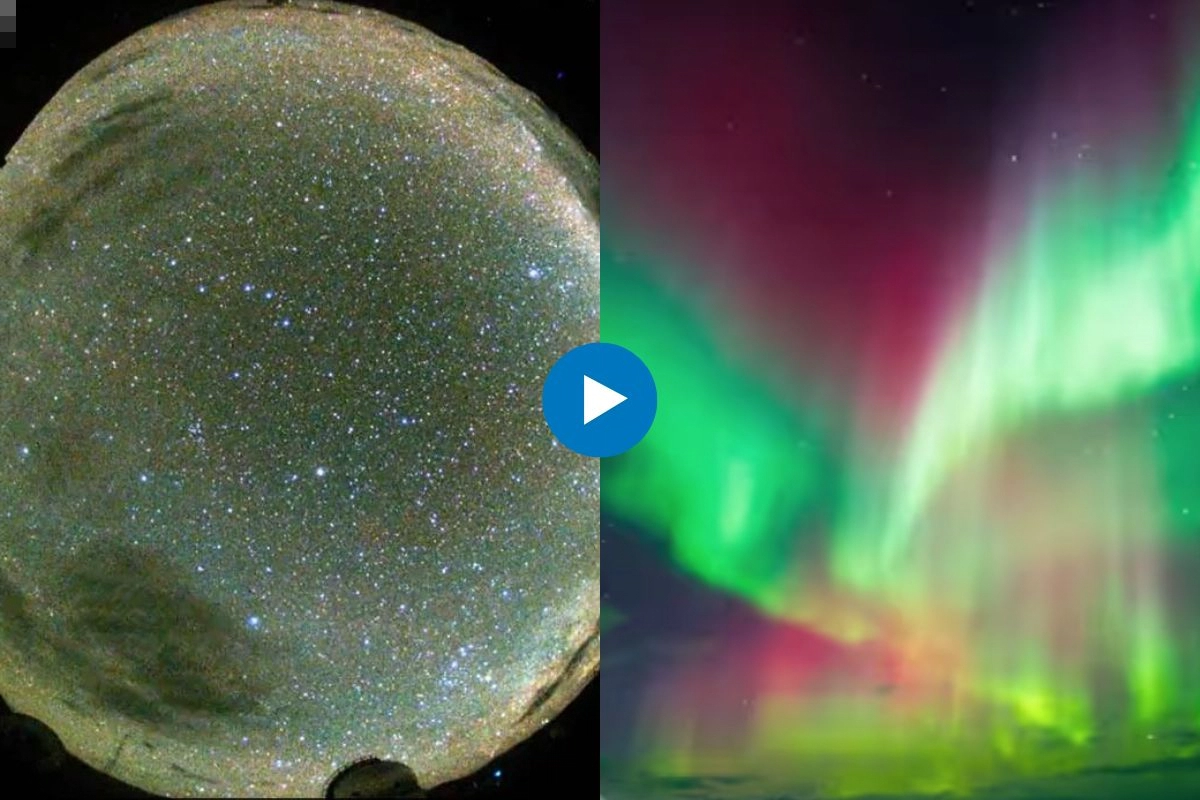Ladakh: India does not experience auroras, also known as northern lights in the Northern Hemisphere, which only occur close to the North or South Pole. The first ever aurora sighting in India occurred in April 2023. On the nights of April 22 and 23, the Indian Astronomical Observatory, which is situated over Mount Saraswati in Hanle, Ladakh, India, recorded aurora lights on its camera.
Only high-latitude areas around the Arctic and Antarctic circles can witness auroras
On April 21, 2023, a powerful geomagnetic storm struck Earth, causing dazzling auroras in a number of locations, including Ladakh. The Indian Astronomical Observatory, which is run by the Indian Institute of Astrophysics (IIA) in Bengaluru, stated on Twitter that seeing auroras at latitudes as low as those in Ladakh is “very rare.” Only high-latitude areas around the Arctic and Antarctic circles, which are located roughly 66.5 degrees north and south of the equator, can witness auroras.
Awe-inspiring auroras observed over Ladakh are captured on video
On the nights of April 22 and 23, an Indian Astronomical Observatory 360-degree camera recorded a time-lapse video of the sky. Awe-inspiring auroras observed over Ladakh are captured on video. The magnetosphere, or the region of space around Earth governed by the planet’s magnetic field, is significantly disturbed when there is a particularly efficient flow of energy from solar winds into the space environment around Earth. The National Oceanic and Atmospheric Administration (NOAA) classifies this disturbance as a geomagnetic storm. Awe-inspiring displays of light in the night sky called auroras are brought on by geomagnetic storms. It turned out that the coronal mass ejection made for a great night for auroral activity. The Indian Institute of Astrophysics cited Mishra as noting that the auroras were seen at lower latitudes than usual. He added that the last time a geomagnetic storm of this intensity happened was in 2015, when it was rare to see auroras in Europe, China, and Ladakh.
Must Read: IBM CEO Announces Hiring Freeze, Artificial Intelligence Advancements to result in 7800 Job losses
Keep watching our YouTube Channel ‘DNP INDIA’. Also, please subscribe and follow us on FACEBOOK, INSTAGRAM, and TWITTER
